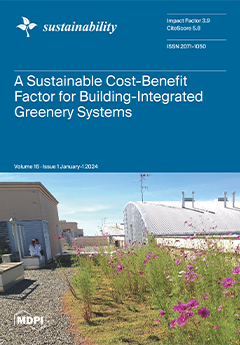With the expansion of urban areas, the amount of sludge produced by sewage treatment plants is increasing, raising big problems regarding the reintroduction of this sludge into nature in order to fully solve the wastewater problem. The application of sludge to agricultural surfaces
[...] Read more.
With the expansion of urban areas, the amount of sludge produced by sewage treatment plants is increasing, raising big problems regarding the reintroduction of this sludge into nature in order to fully solve the wastewater problem. The application of sludge to agricultural surfaces or degraded land is a controversial solution since, despite the well-known benefits, sludge can, in certain cases, represent a real threat to both human health and the environment, with long-term harmful effects. The present study evaluates the potential genotoxicity of sludge using the Comet Test and three cellular bioindicators (lymphocytes, coelomocytes, and
Allium cepa L.) for its quantification. To perform the tests, the soluble fraction of the sludge was used at concentrations of 25%, 50%, 75%, and 100%, as well as a negative control (H
2O) and a positive control (H
2O
2). The Comet test indicated an increase in DNA damage among cells exposed for 4 h in the following order: coelomocytes, lymphocytes, and
Allium cepa L. cells. Our results indicate that
Allium cepa L. nuclei are more sensitive, with genotoxic effects being evident at concentrations as low as 25%. In coelomocytes, we recorded nuclear damage starting at a concentration of 75%. These results indicate the necessity of using multiple genotoxicity tests, combined in a test battery, to achieve a greater level of relevance. The concentration of the soluble fraction of the sludge has an inverse relationship with the auxin content in leaves and roots, suggesting varying levels of stress. The results of this study can contribute to the creation of a genotoxic profile of sewage sludge, facilitating decisions related to reducing its negative impact.
Full article





